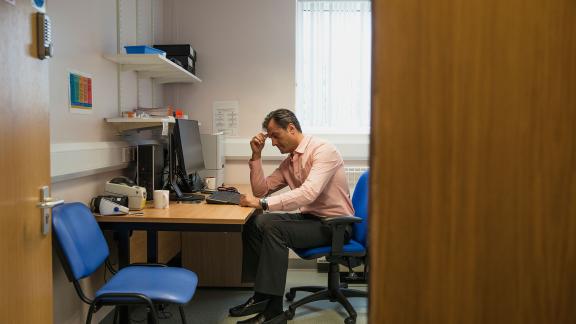Outdated GP surgeries risk derailing Government ambitions to improve access to primary care

Patients risk being put in danger and waits to see GPs and other specialist primary care staff are spiralling because primary care buildings and infrastructure are not fit for purpose.
With figures showing that over one in five of the near 9,000 general practice and primary care premises in England are not fit for purpose, primary care leaders are calling on the government to set aside additional investment to support the building and modernisation of new and expanded clinics to treat patients in the community, as well as for improved IT and management support for staff.
They warn that while existing contracts have helped them to recruit additional staff to jobs traditionally carried out in hospitals or in the private sector including physios, dietitians and occupational therapists, cramped, rundown buildings and a dearth of basic IT equipment such as computers and phones mean new recruits are unable to work efficiently and see patients properly.
This has left some primary care leaders in a catch twenty-two situation unable to recruit more specialist clinical staff because they simply cannot offer them a place to work.
Primary care leaders are also concerned that a lack of basic HR functions and back-office support mean they are also hamstrung in their attempts to employ and expand a new primary care workforce effectively.
One GP and primary care network clinical director from Hertfordshire said: “I have stopped recruiting because I have nowhere to put any more staff.”
Responding to a recent survey of NHS Confederation members another primary care clinical director in the south-east said:
“We’re working in a 1950s tin roof health centre…our ability to meet patient expectations and political promises is impossible unless significant investment in infrastructure is made.
“It is like promising the public a safe, effective, modern car and when they go to collect it, they find a 1970s Ford Escort, with rusting roof, wheezy engine, designed to take four people, but being required to carry 10, and with no one to service it or drive it.”
With primary care delivering around 285m appointments a year in England, (29 million were carried out in September alone), truly meeting the significant increases in demand for services in primary care requires retaining as many staff as possible while building a clear plan for how more can be recruited and how they can be equipped with the necessary estates and infrastructure to do their jobs effectively.
A new report by the NHS Confederation’s Primary Care Network, taking stock of three years of primary care networks also warns that “infrastructure continues to be a limiting factor.”
Ruth Rankine, director of primary care at the NHS Confederation said:
“The ability of primary care to improve access, deploy new roles and see patients in a safe environment is being badly hindered by a lack of adequate estate.
“Primary care leaders are committed to doing all they can to see patients and help tackle the backlog, making sure that patients are seen as quickly and safely as possible, but they are being hamstrung in their attempts by a lack of investment in buildings and IT equipment that means many primary care staff simply can’t do their jobs properly.
“A real lack of investment in primary care capital over the last decade means that rundown buildings and antiquated technology has left primary care leaders despairing of how to recruit the additional staff they so desperately need.”



